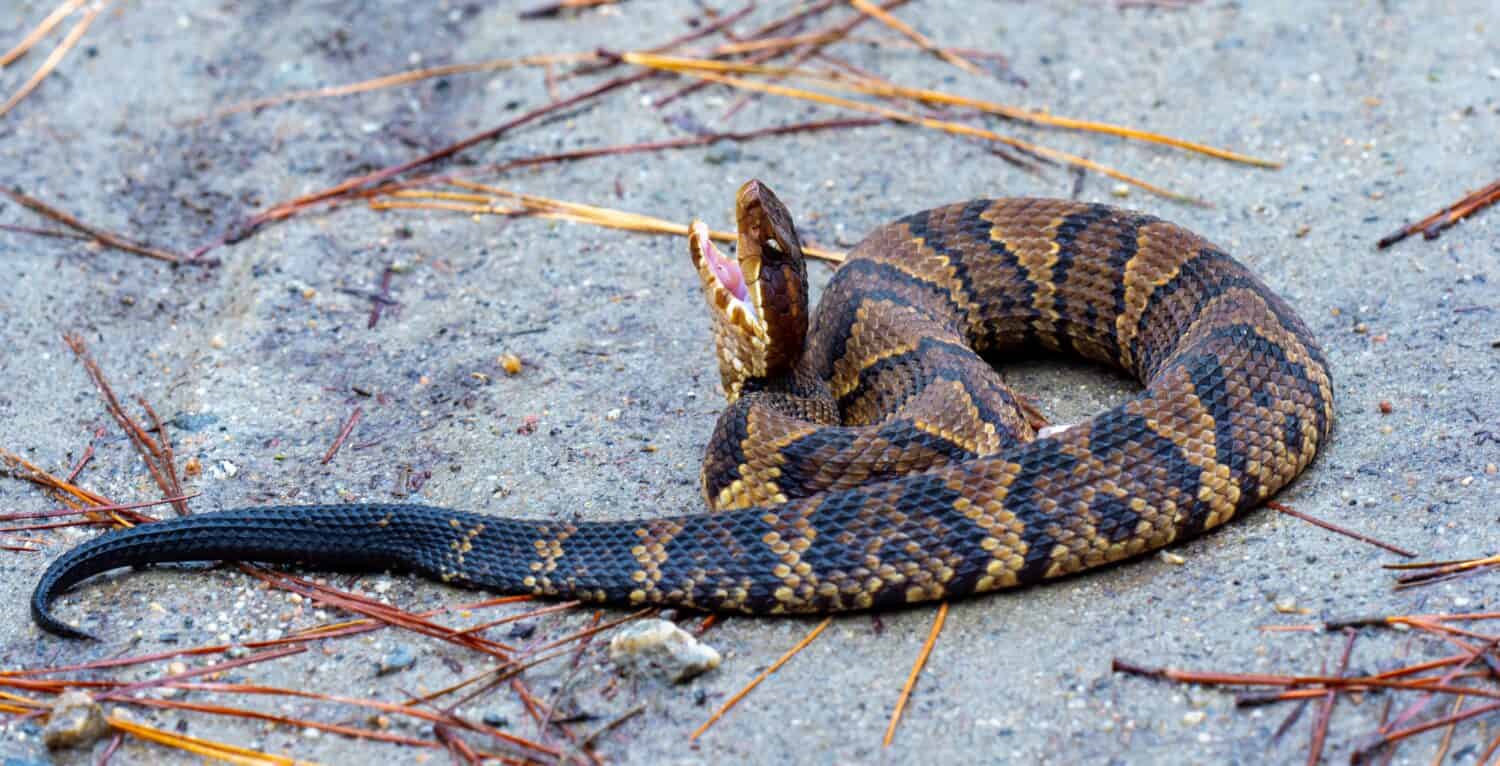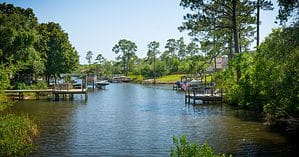Louisiana is home to many lakes, bayous, rivers, and the Gulf of Mexico. Therefore there are several impressive tunnels and bridges to make commuting easier. However, the longest tunnel in Louisiana sits in a suburb of New Orleans called Belle Chasse. This tunnel has a long and interesting history and has helped millions of people reach their destinations safely throughout the years. Due to the fact that this tunnel is underwater, it has many rules and restrictions in place to prevent life-threatening situations.
How Long is the Belle Chasse Tunnel?
The longest tunnel in Louisiana is 1,938 feet long. It has two lanes and a clearance of 13.58 feet.

The Belle Chase Tunnel is 1.938 feet long.
©<https://creativecommons.org/licenses/by/2.0>, via Wikimedia Commons – Original / License
When was the Belle Chasse Tunnel Built?
The building of the Belle Chasse Tunnel began in March 1954 for the purpose of accommodating the new branch of the Intracoastal Canal. The tunnel officially opened in February 1956 after two years of construction, and it cost over $2 million to build. The reason politicians decided on a tunnel instead of a drawbridge was to enable a continuous flow. Furthermore, the longest tunnel in Louisiana was the first fully automatic underwater crossing in the world because it did not need operational staff. Therefore, it operates with ventilation machinery that automatically changes the air inside the tunnel every two minutes, and if the machinery fails, automatic generators take over.
The Longest Tunnel in Louisiana’s Primary Purpose
The Primary purpose of Louisiana’s longest tunnel is to carry traffic from Belle Chasse to Westbank Plaquemines Parish. There have always been restrictions like people traveling through this tunnel are prohibited from carrying hazardous cargo.
By 1967 traffic counts overwhelmed the Belle Chasse Tunnel, and the Judge Perez Bridge was built to help with the congestion. It is a vertical-lift bridge that opened to traffic in 1968 and carries northbound traffic. However, if there are issues with the tunnel, this bridge opens to southbound traffic.
Presently, the Belle Chasse Tunnel is still a busy water crossing used by motorists to and from New Orleans and surrounding areas. The tunnel has a solid white line, which prevents motorists from passing each other. In addition, it is prone to flooding and didn’t operate after Hurricane Katrina. Unfortunately, this tunnel isn’t the safest, and there are plans for a new lift bridge to replace it with improved high-rise structures.
Belle Chasse Tunnel Location
The Judge Perez Bridge and Belle Chasse Tunnel accommodate 23,000 Plaquemines Parish, LA residents. In addition, the Belle Chasse Highway has a current traffic volume of approximately 33,000 vehicles a day.
Cottonmouth Snake

The cottonmouth snake is one of the creatures that lives in the area of the Belle Chase Tunnel.
©Kyle J Little/Shutterstock.com
The cottonmouth is a medium-sized snake measuring 15 to 55 inches long. They are brown, dark tan, or nearly black, with brown crossbands. Their heads are black with a white line from the mouth to the eye. Additionally, the belly is dark with big black blotches. Furthermore, their scales are keeled and occur in 25 rows. Juveniles have pink or orange bodies with bold dark brown crossbands. However, some adults never grow out of these features and look like juveniles for the rest of their lives.
There are many residents in Louisiana that keep these snakes as pets, but it is illegal without a Restricted Snake Permit because they are venomous. Their bite is not to be taken lightly, and if bitten by one of these snakes, you should seek medical attention immediately. Their venom mainly consists of hemotoxins that attack blood cells and prevent blood clotting or coagulation. While deaths are uncommon, their venom does cause scarring and, in some cases, amputation. Cottonmouths are more toxic than copperhead snakes but not as dangerous as rattlesnakes or other vipers.
American Alligator
One of the largest reptiles in North America is the American alligator. These large predators derived their name from Spanish explorers who named them “El legato” or “big lizard.” Offspring are typically black with pale yellow stripes down their flanks. While you also get white or albino alligators, they are uncommon because their complexion doesn’t help them camouflage, and they are easily sunburnt. However there are blue-eyed white alligators in the wild, but they are extremely rare. So, if you want to see one, they are on exhibit at the Aquarium of the Americas or Audubon Zoo in New Orleans.
The alligator’s skin is like battleship armor because it is protected by horny plates. But this is not their only defense mechanism; they also have powerful jaws, sharp teeth, and muscular tails. These sly reptiles are highly suited to survive in their aquatic environment. For example, they know their greatest enemy is humans, so they learn the sound of boats and will flee when they hear them coming.
Great Blue Heron
The Great Blue Heron definitely lives up to its name because they are massive. In fact, they are the largest heron that occurs naturally in North America. Their faces are white, with a black plume extending from their eyes to the back of their heads. In addition, they have orangy-yellow bills. Furthermore, they have greyish-blue bodies, long necks with black and white streaks on the front, and long legs.
Bald Eagle
The Bald Eagle is one of the planet’s most popular and recognizable birds. But have you ever wondered why they are called Bald Eagles when they have a full head of feathers? The iconic white feathers on their heads are one of the reasons they are so well-known. However, their name is actually derived from an old English word, “piebald,” which stands for “white patch,” referring to their heads.
Eastern Spotted Skunk
The Eastern spotted skunk is similar in size to a large gray squirrel but looks completely different. For example, they have a narrow white line beneath their eyes and an upside-down triangle on their foreheads. Furthermore, they have two diagonal lines across the hip and white spots on the rear end. Lastly, Eastern spotted skunks have bushy tails. The LDWF ( Louisiana Department of Wildlife and Fisheries) has asked for the public’s help in gathering information regarding this skunk because there have been no sightings in more than 30 years.
River Otter
The North American river otter is often referred to as a river otter or a Northern river otter. It is native to Northern America. Furthermore, they are semiaquatic mammals that inhabit the waterways and coasts of the USA. Adults weigh between 11 and 30 pounds. So, while they are relatively small, they have insulated, water-repellent fur.
Coyote
Coyotes are abundant in northern and central Louisiana. They like to inhabit the coastal southwest marshes, and their distribution ranges as far as the Florida parishes, southern Mexico, Alaska, and western and southern Canada. In addition, they like to live in farmlands close to wooded areas, woodlands, marshes, plains, and pastures. They typically create dens in thickets, dense cover, and gulleys under roots. However, coyotes also adapt to living in cities.
American Mink
The American mink did not occur naturally in the USA, but some escaped the fur farms in the 50s and 60s, and they have spread like wildfire ever since. Minks are active predators and eat anything they can catch, including native water voles (nearly extinct) and ground-nesting seabirds. In addition, these sneaky critters are great swimmers, and the females can swim to water vole’s water-lined burrows and steal their young. Minks construct their dens close to the water and are fiercely territorial. Mink are more brazen than the secretive otter, so you are more likely to see one. Females have four to six kittens per litter.
The photo featured at the top of this post is © Dr. Warner/CC BY – License / Original
Thank you for reading! Have some feedback for us? Contact the AZ Animals editorial team.







